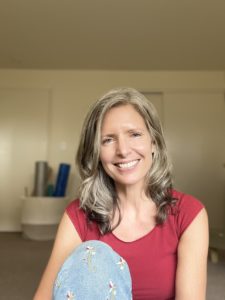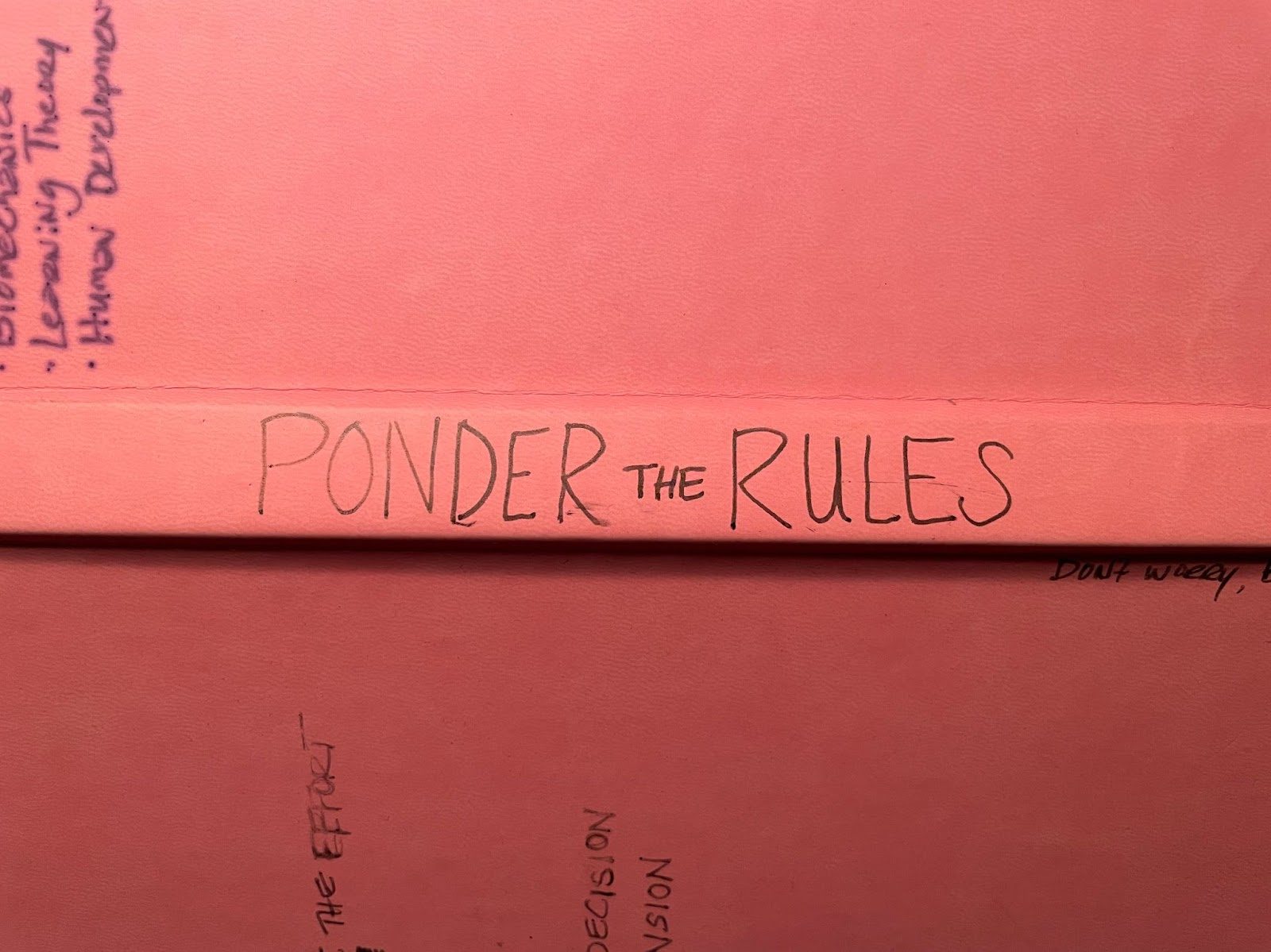Some of the most memorable director’s notes I received as an actor were, “Don’t think – just be.” and “That was good. Now, can you own it?” The one that really stuck was delivered with an exasperated shake of the head after working a scene over and over again: “You are such a good sport, M’Lissa…”
The reason these are memorable is because they weren’t notes about a particular vocal inflection or about crossing the stage at an earlier point in the scene – they were notes about me. And I didn’t know how to change ME.
In the fall of 2018, I enrolled in a 4-year Feldenkrais® practitioner training program with the intention of blending my careers as an actor, massage therapist and yoga instructor into one profession.
The program was rigorous and the curriculum complex. But all of our classes were recorded. So when I began to feel over my head at the midpoint, I went back through those first few training segments in search of what I had missed.
Looking back at those videos, I was always a little surprised to see myself sitting cross legged in the front row, nodding my head, asking questions and practicing the techniques that had been demonstrated earlier in the day. It wasn’t like I didn’t remember being there. I did. The surprise was connected to how I still wasn’t comprehending what had clearly been taught to me all those months ago. And I was starting to wonder if I ever would.
Because the Feldenkrais Method® is a process of self education, our entire cohort regularly discussed strategies for creating optimal learning conditions. One of those strategies is variation. Another is novelty.
To help my brain out, I bought large colorful notebooks and made bubble maps of the material we had covered. I got wireless headphones so that I could attend online mentoring sessions while walking outdoors instead of staring at a computer. I consciously cultivated a ‘growth mindset’ by reframing my mistakes as learning opportunities and sought additional support from trusted peers and instructors.
But the harder I tried, the more lost I felt. This phenomenon of trying harder was also addressed throughout our training. In fact, one of the principles of The Feldenkrais Method states:
“When effort is decreased, one can discriminate finer sensory changes, leading to greater potential for learning.”
There were several strategies built into the curriculum for navigating this compulsion to try harder. One was to go slower. Another was to do less or to start with what comes easily. But the only thing that seemed to adequately fit those strategies were a series of afternoon naps. So some days, I did just that.
As months ticked by, I began suspecting I didn’t have enough formal education in my history to be an effective Feldenkrais practitioner. I started looking into graduate programs in psychology and physical therapy with the intent to fill in the gaps.
A few weeks before our final segment was about to begin, one of my fellow trainees asked me to attend a workshop she was teaching. As her voice guided me through a lesson I’d been taught more times than I could count, something hit me so hard it made me dizzy.
I was following directions. Dutifully. Supportively. Correctly. I was following her directions. And that was all that I was doing.
The next time she gave an instruction, I stopped. Really stopped. I began a conversation with myself that sounded something like this:
What is following directions actually about?
It’s about being a good student. It’s about being a good colleague. And being a good person.
What do ‘good’ people know that others don’t?
They know the rules.
What are the rules?
Take responsibility for your actions, don’t waste people’s time, be grateful, stay organized, talk less, listen more, always remember to…
My colleague interrupted this inner dialogue with the word ‘shoulder’ and my attention drifted to the sensation of my shoulder resting on the floor. I could feel the shape of it, the weight of it, and the way it was poised and ready to receive the next instruction.
When she gave another instruction, I didn’t follow it.
I experienced it.
I felt the tired, shaky obedience of my shoulder’s journey from where it was to where it was being told to go. I sensed the tightness that arose in my chest and arms as they did their job of getting my shoulder to the next ‘right’ place.
With each new instruction, I sensed the quality of my movement and how the action of following those instructions affected my breath, my muscles, and my connection to the ground beneath me. I also sensed how many potential choices I had, but was not using.
I stopped thinking about my classmate. I stopped thinking about The Arc Of The Lesson. I stopped thinking about The Method or The Rules or whether I was good enough to become anything.
I replaced it all with sensing. Sensing for nobody but myself.
The only way I can describe what followed is that the lesson came alive for me. The Awareness Through Movement® lesson I thought I knew so well was now a living thing which was actively teaching me every single neurological, child-developmental, and Newtonian physics concept I had been studying for the past four years.
Let me pause here to provide some context:
I started acting in plays at the age of seven and have been a performer for most of my life. The skills I acquired along the way are intricately tied to observing behavior in others, reflecting it back with specificity, and being able to receive direction about how to do it better. My way of doing this was through practicing empathy, mimicry and meeting other people’s expectations. It was how I knew I was on the right track. I learned yoga that way, downhill skiing that way, fly fishing, parenting and social interactions too.
Laying on the floor of my colleague’s workshop, sensing the truth of my own shoulder blade from the inside out, I finally understood what those directors were looking for in my performances. They weren’t asking me to change who I was. They were asking me to be who I was. To inhabit the actions and to show up as an authentic, spontaneous collaborator.
In his book The Potent Self, Moshe Feldenkrais wrote:
“The object of this learning is to remove outside authority from your inner life and eliminate the old habit of listening to others about your own comfort and convenience.”
Even though that book was assigned (and read!) at the halfway mark of our training, no syllabus can predict the tipping point on each individual’s timeline for learning in the organic way that Moshe was describing.
Every student in The Feldenkrais Training Academy had a portfolio to track their learning process throughout the twelve segments. I never added anything else to my portfolio after attending that 4 hour workshop because I was having too much fun living what I had learned!
I didn’t just “know” about ground forces anymore, I was using them. I wasn’t just “developing strategies to create the conditions for learning”, I was the conditions for learning. The final segment of my training was sprinkled with the same giddy lightness I felt as a kid when I realized my grandfather had quietly let go of the bike I was learning to ride.
In the weeks following graduation, I went back through my big colorful notebooks. It was all there, like messages in a bottle; handwritten by a student on the shores of her own education without the knowledge that someday she would simply learn to swim.
On the cover of one of them, I had written:
“To learn, we need to give up wanting to be right, to be correct, or to know something before we can know it. Or to feel something before we can feel it.” – Moshe Feldenkrais
On the spine of another notebook, in block letters, was a phrase I’d heard our learning director say more than once:
PONDER THE RULES
As I ponder the rules today, I see why a good sport could end up playing by them for a lifetime. They are so effective at offering structure and guidance on the road to learning, it’s easy to mistake them for the real thing. But rules, just like scripted dialogue, need living, breathing individuals to shape them into a meaningful existence.
I am learning how to learn by rewriting, bending and even breaking them when I need to.
It is said that when the student is ready, the teacher appears. This essay is an homage not only to every director, mentor, and colleague I have learned from; but also to My Shoulder, which offered a bridge from conceptual knowledge to concrete understanding at the exact moment I was ready.
 About M’Lissa
About M’Lissa
M’Lissa Hayes is a licensed massage therapist, certified yoga teacher and recent graduate of the Feldenkrais Training Academy in Seattle. She offers consent based movement classes to people who like to create things.
Her website is www.somaticartistry.com

